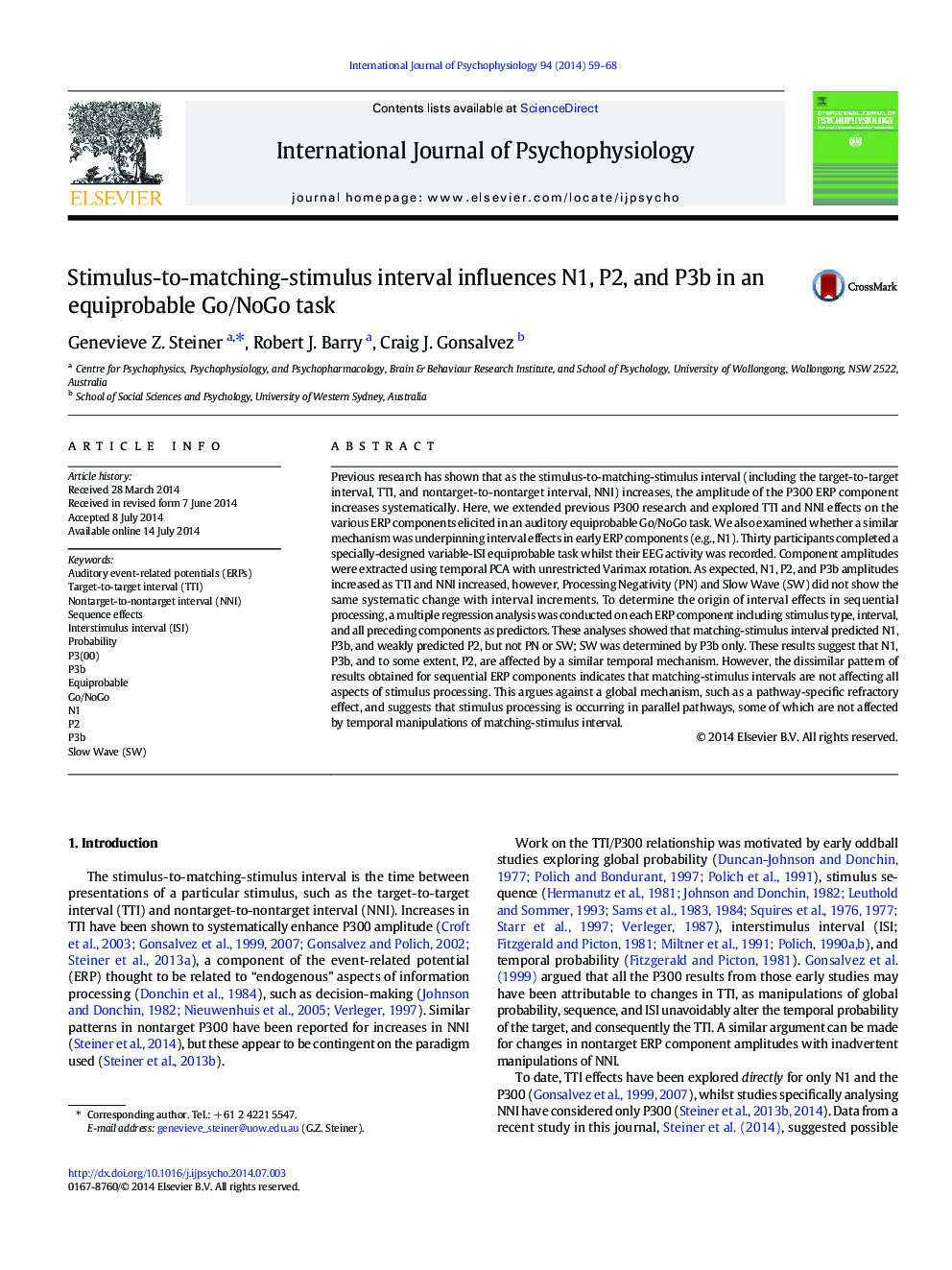| کد مقاله | کد نشریه | سال انتشار | مقاله انگلیسی | نسخه تمام متن |
|---|---|---|---|---|
| 929598 | 1474414 | 2014 | 10 صفحه PDF | دانلود رایگان |

• Employs principal components analysis (PCA) in an uncued Go/NoGo task.
• Demonstrates TTI and NNI effects in N1, P2, and P3b ERP components.
• Provides evidence for stimulus-pathway-specific temporal effects in N1.
• Findings suggest TTI/NNI effects are more than a global refractory period effect.
Previous research has shown that as the stimulus-to-matching-stimulus interval (including the target-to-target interval, TTI, and nontarget-to-nontarget interval, NNI) increases, the amplitude of the P300 ERP component increases systematically. Here, we extended previous P300 research and explored TTI and NNI effects on the various ERP components elicited in an auditory equiprobable Go/NoGo task. We also examined whether a similar mechanism was underpinning interval effects in early ERP components (e.g., N1). Thirty participants completed a specially-designed variable-ISI equiprobable task whilst their EEG activity was recorded. Component amplitudes were extracted using temporal PCA with unrestricted Varimax rotation. As expected, N1, P2, and P3b amplitudes increased as TTI and NNI increased, however, Processing Negativity (PN) and Slow Wave (SW) did not show the same systematic change with interval increments. To determine the origin of interval effects in sequential processing, a multiple regression analysis was conducted on each ERP component including stimulus type, interval, and all preceding components as predictors. These analyses showed that matching-stimulus interval predicted N1, P3b, and weakly predicted P2, but not PN or SW; SW was determined by P3b only. These results suggest that N1, P3b, and to some extent, P2, are affected by a similar temporal mechanism. However, the dissimilar pattern of results obtained for sequential ERP components indicates that matching-stimulus intervals are not affecting all aspects of stimulus processing. This argues against a global mechanism, such as a pathway-specific refractory effect, and suggests that stimulus processing is occurring in parallel pathways, some of which are not affected by temporal manipulations of matching-stimulus interval.
Journal: International Journal of Psychophysiology - Volume 94, Issue 1, October 2014, Pages 59–68